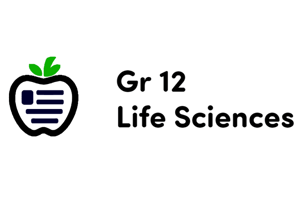Podcast
Questions and Answers
What are some examples of chemical defenses used by plants?
What are some examples of chemical defenses used by plants?
- Structural adaptations like thorns and spines
- Leaf shedding and color changes
- Mimicking the presence of insect eggs on their leaves
- Volatile organic compounds and plant defensive proteins (correct)
What is the optimal defense hypothesis?
What is the optimal defense hypothesis?
- The various types of plant defenses are responses to variations in the levels of nutrients in the environment
- Plants will allocate more energy towards defense when the benefits of protection outweigh the costs (correct)
- Defense strategies are determined by the inherent growth rate of the plant
- Plant defenses are a result of a tradeoff between growth-related processes and differentiation-related processes in different environments
What are indirect defenses used by plants?
What are indirect defenses used by plants?
- Leaf shedding and color changes
- Volatile organic compounds and plant defensive proteins
- Structural adaptations like thorns and spines
- Semiochemicals and endophytic fungi (correct)
What is overcompensation in plants?
What is overcompensation in plants?
What is the growth rate hypothesis?
What is the growth rate hypothesis?
What are some examples of structural defenses used by plants?
What are some examples of structural defenses used by plants?
What is the carbon:nutrient balance hypothesis?
What is the carbon:nutrient balance hypothesis?
What are some uses of plant defense mechanisms in human society?
What are some uses of plant defense mechanisms in human society?
What are quantitative metabolites in plants?
What are quantitative metabolites in plants?
Flashcards
Constitutive Defenses
Constitutive Defenses
Defenses present in a plant regardless of attack.
Induced Defenses
Induced Defenses
Defenses produced by the plant in response to damage or threat from herbivores.
Secondary Metabolites
Secondary Metabolites
Chemical compounds not directly involved in primary metabolic activities, used for defense.
Volatile Organic Compounds (VOCs)
Volatile Organic Compounds (VOCs)
Signup and view all the flashcards
Plant Defensive Proteins
Plant Defensive Proteins
Signup and view all the flashcards
Qualitative Metabolites
Qualitative Metabolites
Signup and view all the flashcards
Quantitative Metabolites
Quantitative Metabolites
Signup and view all the flashcards
Structural Defenses
Structural Defenses
Signup and view all the flashcards
Antiherbivory Compounds
Antiherbivory Compounds
Signup and view all the flashcards
Study Notes
Plants have evolved a range of defenses against herbivores, including chemical and morphological adaptations, and changing their attractiveness to herbivores. Defenses can be either constitutive or induced, and can be directed against insects or vertebrates. The evolution of plant defenses is closely linked to the evolution of herbivores, and in cases of co-evolution, herbivores and plants can have reciprocal evolutionary change. Plant defenses can be classified as constitutive or induced, and include secondary metabolites, morphological and physiological changes, and molecular and biochemical responses. Chemical defenses are linked to the emergence of secondary metabolites that are not involved in essential metabolic activities, and include volatile organic compounds (VOCs), which can be used to deter herbivores or attract their predators. Plants can also produce plant defensive proteins, which can poison herbivores. Qualitative metabolites are toxins that interfere with a herbivore's metabolism, while quantitative metabolites are digestibility reducers that make plant cell walls indigestible to animals. The geranium produces the amino acid quisqualic acid in its petals to defend itself from Japanese beetles. Plants have evolved antiherbivory compounds, including nitrogen compounds, terpenoids, and phenolics.Plant Defense Mechanisms
-
Plants have evolved various defense mechanisms to protect themselves from herbivores.
-
Chemical defenses include alkaloids, cyanogenic glycosides, glucosinolates, benzoxazinoids, terpenoids, and phenolics.
-
Alkaloids can affect metabolic systems in humans and animals and invoke an aversively bitter taste.
-
Cyanogenic glycosides become toxic when herbivores eat the plant and release hydrogen cyanide which blocks cellular respiration.
-
Structural defenses include spines, thorns, trichomes, and silica, which alter the texture of the plant tissue.
-
Thigmonastic movements, such as those in the sensitive plant, close up rapidly in response to touch.
-
Carnivorous plants have evolved in poor nutrient soil and use insects as a source of minerals.
-
Plants mimic the presence of insect eggs on their leaves, dissuading insect species from laying their eggs there.
-
Indirect defenses include semiochemicals, housing and food items for natural enemies, and endophytic fungi.
-
Trees of the same species form alliances with other tree species through underground mycorrhiza networks to share water/nutrients and various signals for predatory attacks.
-
Leaf shedding and color changes are also suggested as adaptations that may help undermine the camouflage of herbivores.
-
Defensive structures and chemicals are costly and require resources that could otherwise be used by plants to maximize growth and reproduction.Plant defense mechanisms and their importance to humans
-
Plant defense mechanisms involve physical, chemical, and mechanical strategies that plants use to deter herbivores, pathogens, and parasites.
-
Plants have constitutive and induced defenses, with the latter being activated in response to a specific threat.
-
The optimal defense hypothesis predicts that plants will allocate more energy towards defense when the benefits of protection outweigh the costs, specifically in situations where there is high herbivore pressure.
-
The carbon:nutrient balance hypothesis states that the various types of plant defenses are responses to variations in the levels of nutrients in the environment.
-
The growth rate hypothesis states that defense strategies are determined by the inherent growth rate of the plant, which is in turn determined by the resources available to the plant.
-
The growth-differentiation balance hypothesis states that plant defenses are a result of a tradeoff between "growth-related processes" and "differentiation-related processes" in different environments.
-
Overcompensation is defined as having higher fitness when attacked by a herbivore. Many plants rely on overcompensation when they are attacked by herbivores.
-
Plant resistance strategies have been used in agriculture and plant breeding, particularly because they can serve as a safe and low-cost alternative to the use of pesticides.
-
Many currently available pharmaceuticals are derived from the secondary metabolites plants use to protect themselves from herbivores, including opium, aspirin, cocaine, and atropine.
-
Repellent companion planting, defensive live fencing hedges, and "obstructive-repellent" interplanting are techniques in biological pest control programs for organic gardening, wildlife gardening, and sustainable landscaping.
-
The selective breeding of crop plants often involves selection against the plant's intrinsic resistance strategies, making them particularly susceptible to pests unlike their wild relatives.
-
Plant defense mechanisms have provided solutions for major socio-economic problems, such as the use of Vitis labrusca root stocks to save the French wine industry from the hemipteran pest insect phylloxera.
Studying That Suits You
Use AI to generate personalized quizzes and flashcards to suit your learning preferences.




